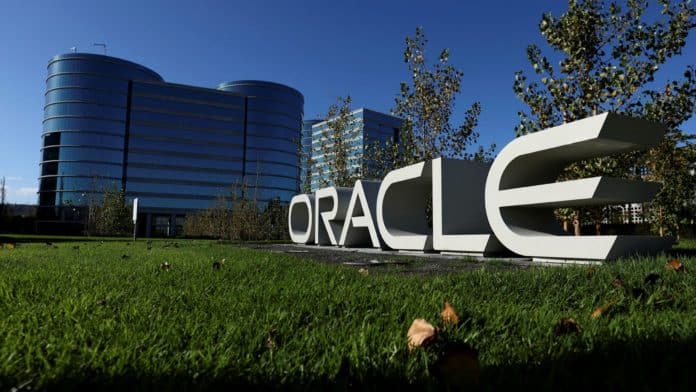Compared to Amazon Redshift, MySQL HeatWave offers 7X better pricing performance, 10X better performance than Snowflake, 25X quicker performance than Redshift ML, and up to 10X higher throughput than Aurora.
The availability of MySQL HeatWave on Amazon Web Services was announced by Oracle today (AWS). The only service that integrates OLTP, analytics, machine learning, and automation powered by machine learning all within a single MySQL database is MySQL HeatWave. Instead of requiring time-consuming ETL duplication between different databases, AWS users can now run transaction processing, analytics, and machine learning workloads in a single service using Amazon Aurora for transaction processing, Amazon Redshift for analytics, and Snowflake on AWS for SageMaker for machine learning.
German-based Johnny Bytes is a cutting-edge digital agency for the creation of websites and mobile applications. According to Thomas Henz, CEO of Johnny Bytes, “MySQL HeatWave on AWS streamlines our data platform with a consolidated database for both transaction processing and analytics.” When compared to AWS RDS and Aurora, complicated queries run 60–90X faster.
This provides the real-time data we require for multichannel campaigns that are specifically targeted. We can now add new clients of any size and more data without having to increase IT administration thanks to our improved scalability. Oracle is announcing a number of new features and benchmarks for MySQL HeatWave on AWS as part of today’s update.
Oracle is announcing a number of new features and benchmarks for MySQL HeatWave on AWS as part of today’s update.
- Improved performance and cost: According to industry-recognized benchmarks, MySQL HeatWave on AWS is optimised for AWS with a superior architecture that offers higher performance and lower cost compared to competing alternatives. The pricing performance of MySQL HeatWave on AWS is 7X better than Amazon Redshift, 10X better than Snowflake, 12X better than Google BigQuery, and 4X better than Azure Synapse on the 4TB TPC-H* benchmark. Redshift ML is 25X slower than MySQL HeatWave on AWS for machine learning. When compared to Amazon Aurora at high concurrency, MySQL HeatWave offers up to 10X greater and sustained throughput on a 10GB TPC-C* application. Customers can reproduce all of these completely transparent benchmark scripts by accessing them on GitHub.
- Native AWS experience: MySQL HeatWave on AWS provides millisecond-level latencies for apps and a robust interactive console, giving AWS users a truly native experience. It makes it easier to manage schema and data, and it lets you run interactive console queries. Users may keep an eye on the effectiveness of their queries as well as how the allocated resources are being used. Additionally connected with the interactive interface, MySQL Autopilot facilitates use.
- Advanced security features: The MySQL HeatWave service now offers a number of thorough security features that further set it apart from Amazon Aurora. These include a database firewall, asymmetric data encryption, and server-side data masking and de-identification. Developers and DBAs can apply digital signatures to verify the identities of people signing documents and strengthen the confidentiality of secret data with asymmetric data encryption. Real-time defence against database-specific attacks like SQL Injections is provided by database firewall. In contrast to Aurora, which layers security techniques on top of the database, these features are made to offer database users the best possible protection.
- MySQL Autopilot: Autopilot automates many phases of the application lifecycle, including as provisioning, data management, query execution, and failure handling, while taking workload into account. The functions of autopilot include provisioning, parallel loading, encoding, data placement, scheduling, query plan optimization, change propagation, and error handling that happen automatically. When combined, these features enhance application performance, cut costs by determining the best configuration to handle a workload, and streamline database administration. Additional Autopilot features for OLTP workloads are being introduced by Oracle today, substantially enhancing MySQL HeatWave’s pricing performance in comparison to Amazon Aurora. By choosing the ideal number of transactions to execute, auto thread pooling increases and maintains throughput at high concurrency. In order to give the best pricing performance for OLTP workloads, auto shape prediction identifies the ideal shape that should be provided. The recommendation in a running system can be to stick with the current shape, upgrade to a larger shape for better performance, or downgrade to a smaller shape to save money, depending on whatever shape offers the best price performance.
- Machine Learning: HeatWave ML offers training, inference, and explanation capabilities for in-database machine learning. Customers can now safely apply machine learning on real-time data without having to deal with the complexity, latency, and expense of ETL. There is no need to move trained models to a different machine learning tool or service because HeatWave ML fully automates the ML lifecycle and stores them all inside the MySQL database. Customers of MySQL HeatWave can get it for no extra cost. Such cutting-edge ML capabilities are not offered by any other cloud database provider or open source database. HeatWave ML scales with the cluster size and trains models on average 25 times quicker than Redshift ML. Customers of MySQL HeatWave can now train their models more frequently and keep them updated for better forecast accuracy.
The distributed cloud is prepared.
A number of clouds, including OCI, AWS, and Microsoft Azure in the near future, currently offer MySQL HeatWave. For businesses who are unable to shift their database workloads to the public cloud, it is accessible on-premises as part of Oracle Dedicated Region Cloud@Customer. Customers who want near real-time analytics can also duplicate data from their on-premises MySQL OLTP applications to MySQL HeatWave on AWS or OCI. In contrast to many other MySQL-based services, MySQL HeatWave always uses the most recent version of the MySQL database.
















































































